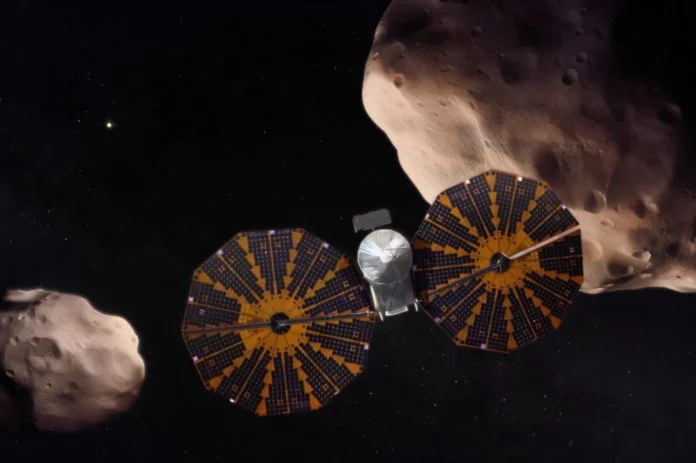The Lucy spacecraft has just gotten its first good look at the main-belt asteroid Donald Johanson as NASA ‘s mission prepares to explore Trojan asteroids all the way to Jupiter.
Donald Johanson is not a Trojan asteroid, but is located in a convenient spot for Lucy to drop by before continuing on to its main targets. Donald Johanson – named after the anthropologist who discovered the fossilized hominid Lucy in 1974 – is a small main-belt asteroid with a diameter of approximately 3 miles (4 kilometers).
Newly released NASA images show the asteroid as a faint light spot in two angles captured by the Lucy LOng Range Reconnaissance Imager (or L’LORRI for short).
The images (below) show Donald Johanson as it appeared 45 million miles (70 million kilometers) away from Lucy. But the spacecraft will shorten that distance by April 20, 2025, when it is scheduled to make a close flyby of Donald Johanson. During the flyby, Lucy will fly within 596 miles (960 kilometers) of the asteroid.

Lucy was launched in October 2021 and already at the beginning of the mission observed the asteroid Dinkinesh and its tiny satellite. At the end of last year, the spacecraft completed a loop around Earth – its second gravitational support of our world – in preparation for accelerating toward Donald Johansson. The gravitational acceleration increased Lucy’s speed relative to the Sun by more than 16,000 miles per hour (25,750 kilometers per hour).
Although Donald Johanson is only a preamble to Lucy’s main event, the asteroid is interesting in its own right. Donald Johanson is believed to be a fragment of a powerful collision that occurred about 130 million years ago, a collision that created the Erigon family of asteroids, according to the Lucy mission website.

Lucy will continue to image Donald Johanson over the next two months as part of the mission’s optical navigation program. Until the flyby on April 20, Donald Johanson will remain an unidentified faint spot.
The first Trojan asteroid on Lucy’s list is Eurybates, which is much larger than Donald Johanson at about 40 miles (64 kilometers) across. A flyby of Euribates will help researchers understand how the Trojan asteroids mostly ended up together in front of Jupiter in its orbit around the Sun, and why the Trojan asteroids have this particular composition. The flyby of Euribates will also allow Lucy to see Ketu, Euribates’ tiny moon. The flyby will take place on August 12, 2027.
Over the next few years, Lucy will make flybys of the Trojans, with the last flyby (of Patroclus and Menoet, the two asteroids shown in the top image) taking place in 2033. But after that, Lucy will remain in a stable orbit and should continue to fly by the Trojans for many years to come.









